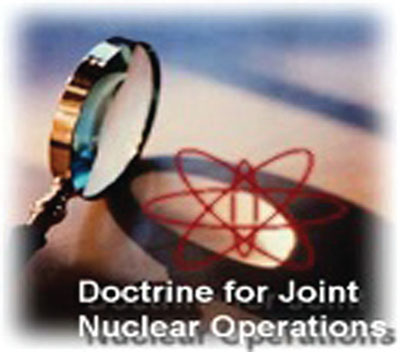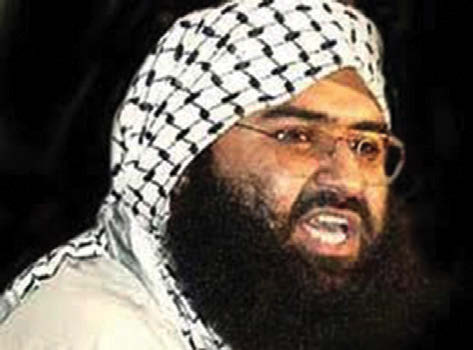
The writing is on the wall as China does not have good track record of strategic comfort and reliability vis-a-vis India. The current incidence of Chinese incursion into Indian territory in Daulat Beg Oldie region in the Ladakh sector should be an eye-opener. While India must focus on its economic, infrastructure and social development and must not waste her meager fiscal resources in a costly nuclear race, she needs to be prepared for all strategic options. Given the aggressive behavior of China in recent years appropriate and credible policies need to be adopted including having a re-look at evolving nuclear posture of China”, says the author.
Like a chameleon, the dragon, very predictably is changing its colors with regards to its often stated nuclear doctrine of “no first use” (NFU). Since 1964 when China conducted its first nuclear weapon test, China has repeatedly and vociferously insisted that it would not be the first nuclear power to use a tactical or strategic nuclear weapon in pursuit of its strategic objectives. This NFU pledge was explicitly and unconditionally included in each of China’s defense white papers from the first in 1998 through the seventh one in 2011.
Recently, there is some international debate about possible changes in China’s NFU doctrine following publication of China’s biannual 2013 Defense White Paper. However, it appears that China may have moved beyond its socalled NFU doctrine and its duplicitous pledges do not hold any sincere meaning. Strategic deception has been an important part of China’s military DNA since the times of Sun Tzu who wrote in his treatise the Art of War: “All warfare is based on deception. Hence, when we are able to attack, we must seem unable; when using our forces, we must seem inactive; when we are near, we must make the enemy believe we are far away.
Since achieving a great economic success and flush with $ 3.4 trillion foreign exchange reserves, China has increased its list of core national issues and has adopted a more belligerent strategic posture and hegemonic attitude towards international community in general and its neighbors in particular. Disregarding the Deng’s advice of lying low and bidding your time, the current (5th) generation of China’s leaders are adopting aggressive postures militarily though the transformation into visibly hardened strategic claims started really during the reign of the 4th generation leaders (Hu Jintao, Wen Jiabao and Wu Bangguo).
The last time a Chinese paramount leader reaffirmed the so-called NFU pledge was on March 27th 2012 in Seoul Nuclear Conference when Hu Jintao mentioned it in his address. However, in December 2012, the new 5th generation Chinese paramount leader Xi Jinping failed to mention about the so-called no first use pledge in a speech given to Second Artillery Force of the PLA which manages China’s land-based nuclear weapons. Apparently, he also stated that nuclear weapons create strategic support for China’s status as a major world power.
This is a significant departure from the previously stated public positions citing Mao Zedong’s ideas about the use of nuclear weapons as a taboo and labeling the nuclear weapons essentially as “paper tigers”.
Fundamentals of NFU Commitment
Out of the nine countries that possess nuclear weapons currently, only two, China and India had explicitly stated “No First Use” as the guiding principle of their strategic nuclear doctrine.
An absolute and unconditional NFU commitment would have four following components:
1. Not to use nuclear weapons first against countries that possess nuclear weapons
2. Not to threaten use nuclear weapons first against countries that possess nuclear weapons
3. Not to use nuclear weapons first against countries that do not possess nuclear weapons
4. Not to threaten to use nuclear weapons first against countries that do not possess nuclear weapons
NFU policy has been a core feature of the Chinese defense policy having been decided apparently by Chairman Mao himself in 1964. Critics of the Chinese NFU commitment claim that it is completely unverifiable and is mere rhetoric. Selfdescribed “China hawks” in the West have derisively dismissed the Chinese NFU pledge as pure propaganda for the last five decades. Chinese strategists have debated the merits of dropping or altering the NFU policy. This debate was reportedly very intense from mid to late 2000s.
There are assertions from Chinese officials that Chinese NFU commitment is not applicable to perceived claims on territories. China has territorial disputes with multiple neighbors including India. Presumably since China continues to claim that Arunachal Pradesh is its own territory, in a hypothetical scenario, it may use tactical nuclear weapons in a war with India in eastern sector because China will consider this use not against any other country but in its own perceived territory. Similarly, China will not be bound by its
NFU if the US were to intervene in Taiwan in case of a Sino-Taiwanese war as it considers Taiwan as a renegade province. Chinese NFU is not applicable if it apprehends annihilation of its top leadership by conventional means. Similarly, a conventional attack on strategic target like the Three Gorges Dam would be an exception to the NFU pledge. More recently, Chinese have discussed other possible exceptions from their NFU commitment including a massive precision guided conventional attack on their intercontinental ballistic missile silos or their strategic facilities. As China moves away from minimal credible deterrence to “limited deterrence”, a more sophisticated delivery mechanism and an exponential increase in its nuclear stockpile, it has also moved towards greater flexibility and continued opacity in its nuclear operational doctrine. It is pertinent to say that the socalled Chinese NFU commitment has never been taken seriously by both the US and Russia at any time in their policy matrix.
Chinese Nuclear Arsenal
China can be considered the largest nuclear power after the US and Russia. China’s nuclear capability is apparently stronger than those of the next six nuclear states combined. According to Russian estimates, since early 1960s China has generated 40 tons of enriched weapons grade uranium and 10 tons of plutonium which would be enough to produce 3,600 nuclear war-heads. It is probable that half of this fissile material is kept in stocks whereas the rest half has been used up to produce 1500-1800 warheads, half of which may be in storage. This would leave 800-900 warheads that could be available for operational deployment on various types of delivery vehicles. Therefore, the real motives for China’s complete secrecy about its nuclear forces lie not in their “weakness” and “small size” but in much larger strength of China’s actual nuclear arsenal that is much higher than the commonly cited number of 300-400 warheads by the western analysts. There is also a great degree of international uncertainty about the hundreds of tunnels being built in China as their purpose has not yet been officially explained.
Chinese Nuclear Posture and Track II Interactions
Personal interactions with various Chinese academicians and officials during policy conferences suggest that China will continue to add to its nuclear arsenal and will not participate in any nuclear disarmament program till it reaches a certain level. This analyst has interacted with Professor Shen Dingli, Associate Dean of the Institute of International Studies from Fudan University, Shanghai over the last four years with very consistent and candid answers regarding Chinese national nuclear posture.
Professor Shen Dingli claims to have independent (but sometimes more hawkish views) from those of the Chinese Government. In 2009 Carnegie Nuclear Policy Conference in Washington, DC, he expressed absolute ignorance about Chinese proliferation activities and the fact that Chinese weapons designs were turned in by Libya to the International Atomic energy Agency (IAEA) when Libya folded up their clandestine nuclear program.
He was totally unaware of China’s both vertical and horizontal proliferation activities as late as April 2009. During the 2009 Carnegie International Nonproliferation Conference, Washington, DC, he agreed that Chinese government will continue to increase its number of nuclear war-heads.
In a more recent Carnegie Endowment meeting on India-China dialogue in Washington DC on January 10th 2013, he again reiterated that China will continue to modernize its nuclear arsenals and the delivery systems till a perceived parity is achieved with the two great powers (US and Russia). China will certainly not agree to cut the number of nuclear arsenals as it wants both the US and Russia to implement further reductions in their respective nuclear arsenals.
Interactions with another Chinese academician Dr. Shulong Chu, Professor of Political Science and International Relations at the School of Public Policy and Management and the Deputy Director of the Institute of International Strategic and Development Studies at Tsinghua University in Beijing, China in a session on China-US Strategic Stability on 4/6/2009 during the Carnegie International Nonproliferation Conference, Washington DC revealed very interesting Chinese perspectives.
Chu explicitly stated that since China has accepted US supremacy, analogously both India and Japan should accept Chinese supremacy in the Asiapacific region. China is a bigger country than Japan and India. It has bigger military requirements. Japan, India and other Asian countries should understand that and should be willing to accept China’s ongoing modernization of its military and strategic (read nuclear) assets. Chu further went on saying: “Russia and the US have too many nuclear war-heads. They can afford to have deep cuts. China cannot do that because China has too few. China wants more and its agenda is to have more nuclear weapons”.





Be the first to comment